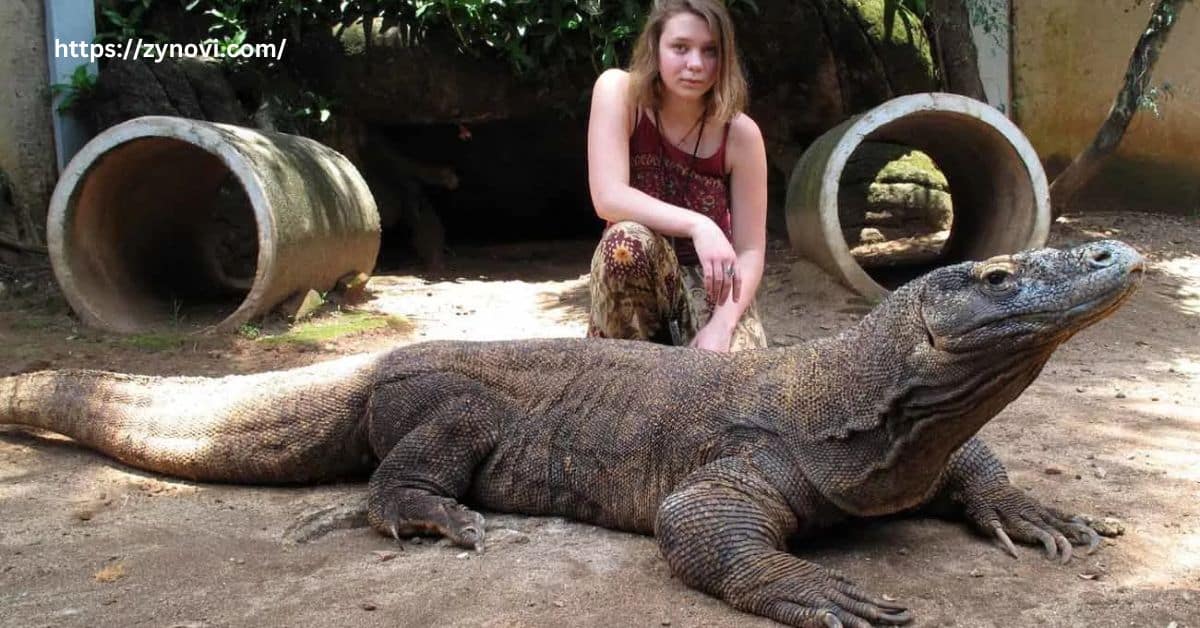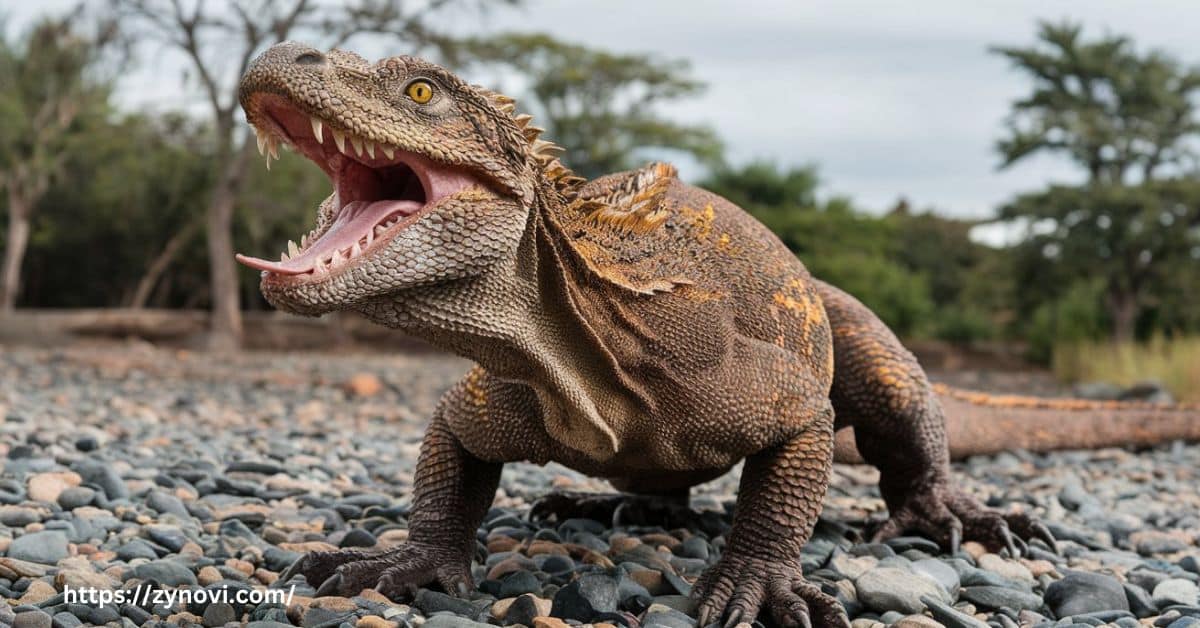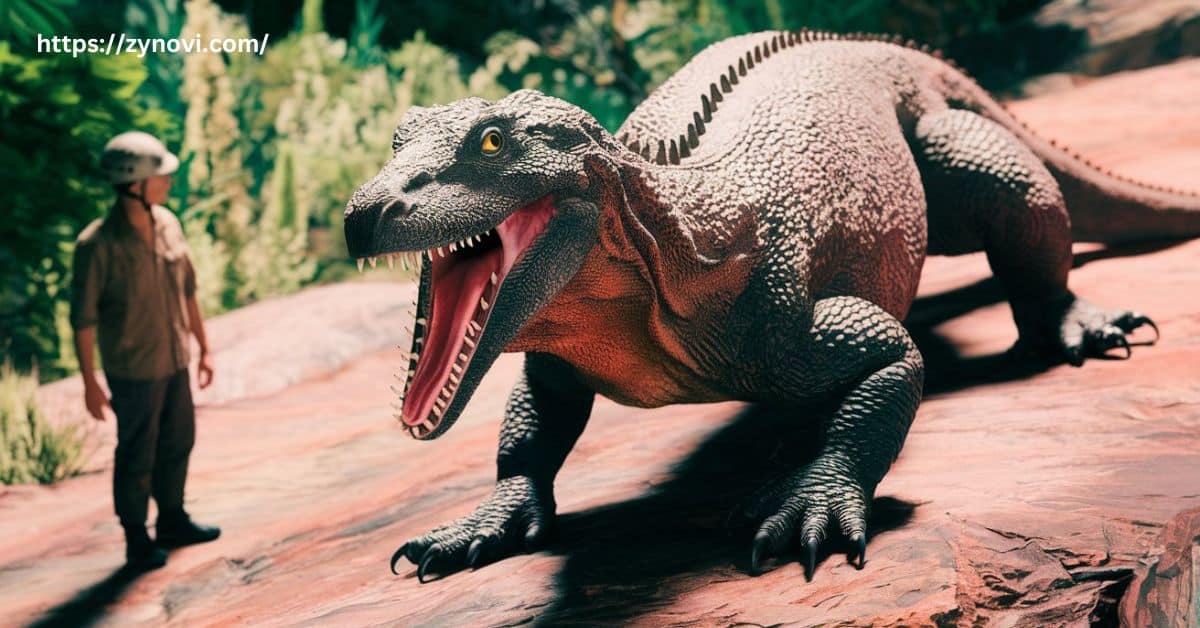Do Komodo Dragons Attack Humans? While fatalities are rare, their venomous bite and powerful jaws can cause serious injuries, so maintaining a safe distance is crucial.
Cop
It’s a question that sparks curiosity and excitement, given these massive reptiles fearsome reputation. In this article, we’ll explore the truth behind Komodo dragon attacks, exploring the risks, their behavior, and what you need to know if you ever find yourself in their territory.
Get ready to uncover the facts and learn how to safely appreciate these extraordinary animals without fear. Keep reading to discover more!
Understanding the Komodo Dragon
What Are Komodo Dragons?
The Komodo dragon, a native species of Indonesia, holds the title of the world’s largest lizard. These reptiles have evolved over millions of years, gaining the reputation of apex predators within their environment.
Found primarily on Komodo Island, Rinca Island, Flores Island, and Gili Motang, they thrive in specific habitats where their hunting skills shine.
Komodo Dragon Physical Characteristics
- Size: Adult Komodo dragons can grow up to 10 feet in length and weigh as much as 150 pounds, making them the heaviest lizards on Earth.
- Skin and Scales: Their thick, armored skin is embedded with bony plates called osteoderms, which provide natural protection against injuries and predators.
- Claws and Teeth: They possess razor-sharp claws and over 60 serrated teeth, designed to tear through flesh efficiently during hunting and feeding.
- Venomous Bite: Scientific research confirms that their bite delivers venom loaded with toxins that prevent blood clotting, leading to shock and hastening the death of their prey.
Habitat and Distribution
Komodo dragons inhabit grasslands, savannas, and tropical forests at low elevations. These habitats provide ample opportunities for hunting and scavenging. However, habitat loss due to climate change and human activities poses a significant threat to their survival.
| Key Locations | Environment | Notable Facts |
|---|---|---|
| Komodo Island | Dry savanna | Home to the largest Komodo population |
| Rinca Island | Mixed forest | Known for frequent human encounters |
| Flores Island | Grasslands | Expanding human settlements |
| Gili Motang | Coastal areas | Smallest population |
Diet and Hunting Behavior
Komodo dragons are opportunistic predators, preying on a wide range of animals such as deer, wild boar, water buffalo, and even smaller Komodo dragons. They rely on their stealth and patience to execute ambushes, waiting motionless until an unsuspecting victim comes within striking distance.
Once they land a venomous bite, the prey often succumbs to the combined effects of venom-induced blood loss and shock. This enables the dragon to follow the weakened or deceased prey with minimal effort, showcasing their efficiency as hunters.
Do Komodo Dragons Attack Humans?

Can you survive a Komodo dragon bite? Here are some fact and incidents about this:
Do Komodo Dragons Attack Humans? Documented Incidents
Between 1974 and 2012, at least 24 attacks were reported, with five resulting in fatalities. Notable cases include:
- 2008: A group of scuba divers became stranded on Rinca Island and encountered a Komodo dragon. Despite the tense situation, they managed to fend off the reptile and escape unharmed.
- 2009: Muhamad Anwar, a fisherman working on Komodo Island, was tragically attacked and killed by a Komodo dragon after he fell from a tree while seeking safety.
- Boy in the scrubland: In a heartbreaking incident, a young boy exploring scrubland near his village fell victim to a Komodo dragon attack, succumbing to severe injuries despite rescue efforts.
Do Komodo Dragons Attack Humans? Reasons for Attacks
- Territorial Defense: Komodo dragons are fiercely territorial and may attack humans who inadvertently intrude on their space. Such attacks often occur when the animal perceives a threat to its dominance or safety.
- Predatory Instincts: Humans, especially if injured or appearing vulnerable, can be mistaken as prey. The dragon’s natural predatory drive may trigger an attack in such situations.
- Food Scarcity: Habitat loss and dwindling prey populations force Komodo dragons to venture closer to human settlements, increasing the likelihood of confrontations and attacks.
Venom and Bite Mechanics
Can a human survive a Komodo dragon bite?
- Prevents Blood Clotting: The venom of a Komodo dragon contains anticoagulant properties that prevent the victim’s blood from clotting, leading to significant blood loss.
- Induces Shock: The venom lowers blood pressure and causes shock, further weakening the prey and hastening its demise.
- Accelerates Death: By combining venom with a powerful bite, the Komodo dragon ensures that its prey cannot escape, simplifying consumption.
- Bite Force: With a bite force measuring around 1,000 PSI, the dragon can inflict deep, devastating wounds capable of subduing even large animals.
Frequency of Human Encounters
Encounters between humans and Komodo dragons, while rare, are steadily increasing due to growing habitat encroachment and a rise in tourism. As human activities expand into their territories, the chances of interactions rise.
Tourists visiting Komodo National Park or surrounding islands may unintentionally provoke these reptiles by venturing too close or disrupting their natural behaviors.
Staying informed about these risks and practicing vigilance during visits is vital for reducing potential dangers. Moreover, respecting their space and adhering to safety guidelines ensures both human and animal safety.
Staying Safe Around Komodo Dragons

Safety Tips for Tourists
- Travel in groups: Komodo dragons are naturally wary of larger groups, and this reduces the likelihood of an attack. Staying together ensures safety in numbers.
- Stay on designated paths: These trails are designed to keep visitors away from areas where Komodo dragons are known to hunt or ambush prey. Straying from paths increases risks.
- Keep your distance: Maintain at least 10 feet from any Komodo dragon to avoid provoking them. These reptiles can perceive close proximity as a threat or an opportunity to strike.
Emergency Response
In the event of a bite:
- Stop bleeding with pressure and a clean dressing: Apply pressure to the wound with a clean cloth to stop the bleeding and elevate the area if possible.
- Seek immediate medical attention to counteract venom effects and prevent infection: Get medical help quickly to manage venom effects and avoid serious complications.
- Administer antibiotics as Komodo bites carry a high risk of bacterial infection: Komodo bites can introduce harmful bacteria, so prompt antibiotic treatment is necessary to prevent infections.
Long-Term Safety Strategies
- Education Programs: Implementing education programs for locals and tourists helps increase awareness about Komodo dragons’ behavior, promoting safer interactions and reducing the risk of bites or attacks.
- Local Regulations: Enforcing strict guidelines and regulations within Komodo National Park ensures that visitors stay at a safe distance, follow designated paths, and avoid dangerous encounters with the dragons, safeguarding both people and wildlife.
Do Komodo Dragons Attack Humans? Komodo in Captivity
Behavior in Captivity
In captivity, Komodo dragons retain their natural hunting instincts but adjust to the controlled environment, where they are regularly fed and do not face natural predators, leading to more predictable behaviors.
Do Komodo Dragons Attack Humans? Safety Concerns in Zoos
- Protective Barriers: Zoos use strong, reinforced enclosures to ensure the safety of both visitors and staff, preventing the Komodo dragons from escaping or coming into close contact with people.
- Trained Staff: Zookeepers and handlers receive thorough training to manage and care for these powerful creatures, ensuring both animal welfare and human safety.
Conservation and Breeding Programs
- Captive Breeding Programs: These programs aim to sustain healthy populations of Komodo dragons in captivity, preserving genetic diversity to support future reintroduction efforts.
- Habitat Restoration Projects: Conservationists work on restoring the Komodo dragon’s natural habitat, addressing environmental changes and threats to ensure the species’ long-term survival.
- Public Education Initiatives: Zoos and wildlife parks educate the public on the importance of protecting Komodo dragons, promoting awareness of conservation efforts and fostering coexistence between humans and wildlife.
FAQs
Are Komodo Dragons Naturally Aggressive?
While generally elusive, they can exhibit aggression when threatened or hungry.
Why Are They Considered Dangerous to Humans?
Their venomous bite, combined with immense strength and speed, makes them formidable predators.
Can Humans Survive a Komodo Dragon Bite?
Yes, with immediate medical care, including antibiotics and anti-venom treatments.
What to do if a Komodo Dragon is Chasing You?
Stay calm, back away slowly, and avoid sudden movements that may provoke an attack.
Can Komodo Dragons Eats human?
Komodo dragons do not eat humans, but their powerful bite and venom can cause serious harm.
Conclusion: Are Komodo Dragons Attack Humans?
Komodo dragons are remarkable creatures known for their strength and evolutionary success. Although attacks on humans are rare, it’s important to understand their behavior and respect their space to minimize risks.
With proper education and awareness, we can reduce the likelihood of dangerous encounters. Conservation efforts, including habitat restoration and breeding programs, are crucial to preserving their populations.
By promoting coexistence and safeguarding their natural environments, we can help ensure that these majestic reptiles continue to thrive and play their vital role in the ecosystem for generations to come.










